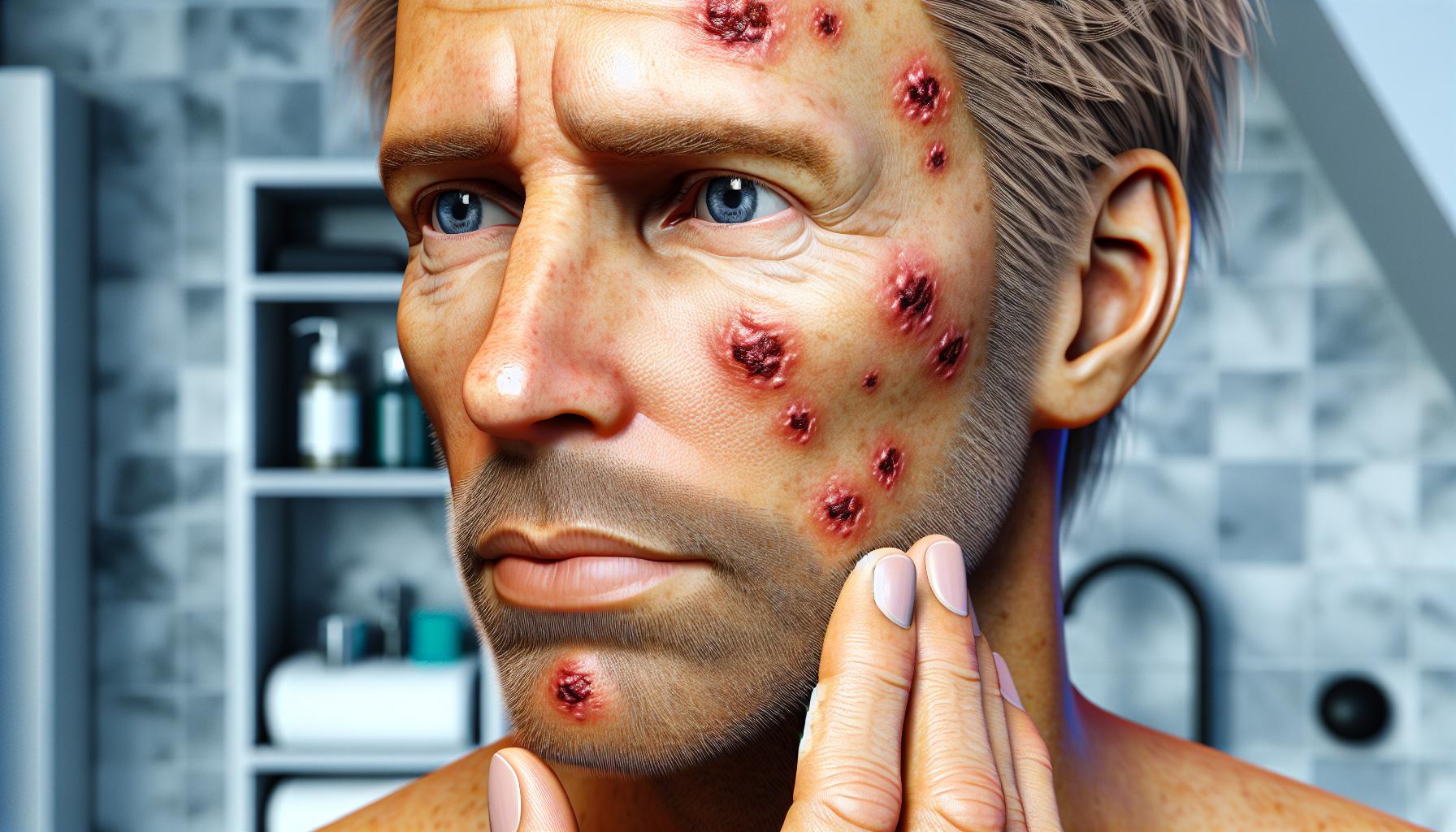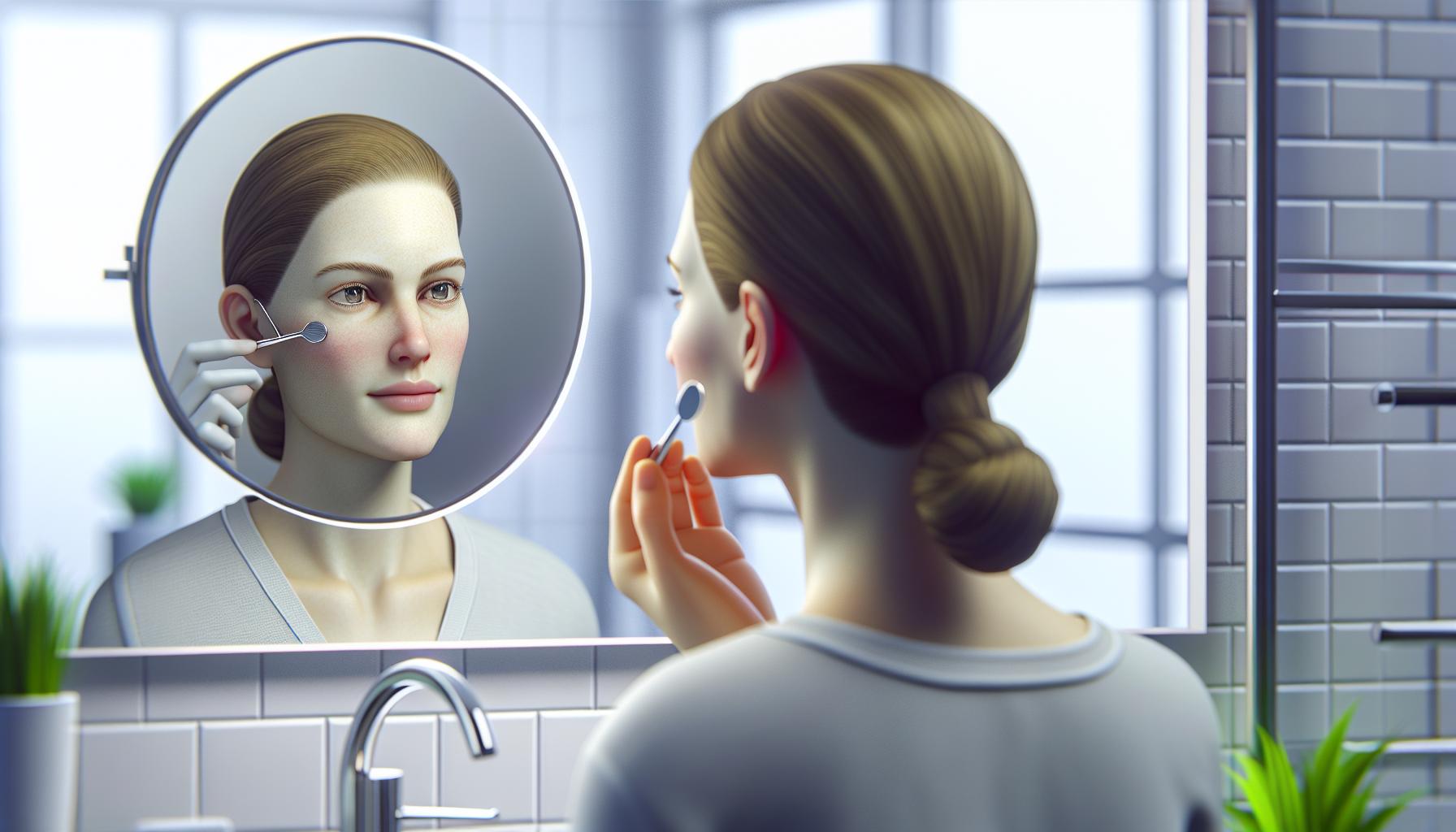Spotting early-stage skin cancer isn’t just about playing detective with your dermis – it’s a crucial skill that could save your life. While nobody wants to hear the “C” word, catching skin cancer in its initial phases dramatically increases the chances of successful treatment.
Like a stealthy ninja, skin cancer often sneaks up without obvious symptoms. That’s why understanding the telltale signs of early-stage skin cancer, particularly in facial areas, has become more important than ever. With melanoma rates rising faster than a summer thermometer, it’s time to get smart about skin health and learn what those suspicious spots might be trying to tell us.
Face:zrbdrslzgpa= Early Stage Skin Cancer
Early stage skin cancer on the face presents distinct characteristics that make detection possible during routine self-examinations. Facial skin cancer develops gradually with visible changes in the appearance of skin cells.
Common Types of Facial Skin Cancer
Basal cell carcinoma appears as pearly nodules or flat patches with raised borders, accounting for 80% of facial skin cancers. Squamous cell carcinoma manifests as rough scaly patches or firm red bumps, commonly found on sun-exposed areas. Melanoma shows up as asymmetrical moles with irregular borders color variations in brown black or red shades. These three types exhibit unique growth patterns:
| Cancer Type | Appearance | Prevalence on Face |
|---|---|---|
| Basal Cell | Pearly bumps | 80% |
| Squamous Cell | Scaly patches | 15% |
| Melanoma | Irregular moles | 5% |
High-Risk Areas on the Face
The nose bridge ears cheeks experience the highest exposure to UV radiation making them prime locations for skin cancer development. Statistics indicate specific vulnerable zones:
| Facial Area | Risk Percentage |
|---|---|
| Nose | 35% |
| Cheeks | 25% |
| Forehead | 20% |
| Ears | 15% |
| Around Eyes | 5% |
These areas require extra attention during skin examinations due to their elevated sun exposure levels. The thin delicate skin around the eyes lips shows early signs of damage particularly in individuals with fair complexions reduced melanin protection.
Warning Signs and Symptoms

Early-stage skin cancer exhibits specific visual indicators that signal potential cellular changes. Regular monitoring of these signs enables prompt medical intervention when irregularities appear.
Visual Changes to Watch For
Skin cancer manifests through distinct physical changes on facial skin:
- New growths that enlarge over time
- Spots that bleed easily without injury
- Persistent sores that don’t heal within 3 weeks
- Rough patches with raised red areas
- Waxy translucent bumps with visible blood vessels
- Dark spots developing within existing moles
- Changes in skin texture or color in specific areas
- Itching or tenderness in a particular spot
ABCDE Rule for Melanoma Detection
The ABCDE rule provides a systematic approach to identify melanoma:
| Melanoma Warning Sign | Measurement/Timeframe |
|---|---|
| Minimum Size Concern | 6mm diameter |
| Growth Timeline | 3-4 weeks |
| Color Variations | 2-3 different shades |
| Border Changes | Within 2-3 months |
Risk Factors for Facial Skin Cancer

Facial skin cancer develops through a combination of environmental exposures genetic predispositions. Understanding these risk factors enables better prevention strategies targeted protection methods.
Sun Exposure and UV Damage
UV radiation causes 90% of facial skin cancer cases through direct DNA damage to skin cells. Prolonged sun exposure between 10 am-4 pm increases cancer risk by 75%, especially in areas with high UV index ratings above 6. Chronic UV exposure leads to:
- Photodamage in the epidermis layer
- Formation of actinic keratoses on sun-exposed areas
- Breakdown of collagen fibers in deeper skin layers
- Accumulation of genetic mutations in skin cells
Tanning bed use multiplies skin cancer risk by 2.5x, with effects showing after 10 cumulative sessions. Severe sunburns during childhood triple the likelihood of developing skin cancer later in life.
Genetic and Environmental Factors
Genetic susceptibility accounts for 10% of facial skin cancer cases through inherited traits specific DNA variations. Key genetic risk factors include:
- Fair skin with reduced melanin protection
- Family history of skin cancer (3x higher risk)
- Multiple atypical moles (5x increased risk)
- Immunosuppressive conditions
Environmental factors beyond UV exposure contribute to skin cancer development:
- Exposure to industrial chemicals like arsenic tar
- Living in high-altitude locations
- Regular contact with radiation therapy
- Chronic scarring from burns injuries
People with light eyes blonde hair face a 50% higher risk compared to those with darker features. Geographic location impacts risk levels, with equatorial regions showing 65% more cases annually.
Early Detection Methods

Early detection methods identify skin cancer changes before symptoms become severe. Regular monitoring through self-examinations combined with professional screenings increases the chances of identifying skin abnormalities at treatable stages.
Self-Examination Guidelines
Monthly self-examinations reveal skin changes using the ABCDE method. Standing in front of a well-lit mirror enables thorough facial inspection, focusing on high-risk areas like the nose, cheeks, forehead, ears, and eye regions. Digital photos taken every three months create a baseline record of existing spots and moles. A handheld mirror assists in examining difficult-to-see areas behind the ears and along the hairline.
Key examination steps include:
- Documenting new growths larger than 6mm
- Tracking changes in existing moles using reference photos
- Noting spots that bleed, itch, or remain unhealed after 14 days
- Recording color variations within single lesions
- Mapping mole patterns to identify new formations
Professional Screening Options
Annual skin cancer screenings by dermatologists provide comprehensive evaluations. These screenings incorporate specialized tools:
- Dermatoscopes for 10x magnified skin examination
- Digital mole mapping systems to track changes
- Wood’s lamp analysis for pigmentation assessment
- Photography documentation for progression monitoring
Professional screenings include:
- Full facial assessment focusing on sun-damaged areas
- Biopsy sampling of suspicious lesions
- Risk assessment based on skin type
- UV damage evaluation through specialized imaging
- Custom screening schedules based on risk factors
- Previous skin cancer diagnosis
- Multiple atypical moles
- Family history of melanoma
- Extensive sun damage history
Treatment Options for Early Stage Facial Skin Cancer
Early stage facial skin cancer responds effectively to several treatment approaches. The selection of treatment depends on factors such as cancer type, size, location on the face, and overall health status.
Surgical Procedures
Surgical removal remains the primary treatment for early stage facial skin cancer, offering cure rates of up to 98%. Mohs micrographic surgery preserves healthy tissue while removing cancerous cells layer by layer, making it ideal for visible facial areas like the nose, eyes, and lips. Standard excision removes the tumor with a margin of healthy tissue, typically 4-6mm for basal cell carcinomas and 6-10mm for squamous cell carcinomas. Curettage and electrodesiccation involves scraping away cancer cells followed by electrical cauterization, suitable for small superficial lesions under 2cm. Laser surgery targets precancerous lesions and very early stage cancers with minimal scarring.
Non-Surgical Treatments
Topical medications like 5-fluorouracil cream and imiquimod eliminate cancer cells through direct application over 4-8 weeks. Photodynamic therapy combines light-sensitive drugs with specific wavelengths of light to destroy cancer cells, achieving clearance rates of 85% for superficial lesions. Cryotherapy freezes cancerous tissue using liquid nitrogen, effective for lesions smaller than 2cm. Radiation therapy employs targeted X-rays over 15-30 sessions, particularly useful for patients who cannot undergo surgery. Immunotherapy medications stimulate the immune system to fight cancer cells, showing response rates of 75% in early stage cases.
Prevention Strategies
Preventing facial skin cancer involves implementing multiple protective measures against UV radiation exposure. These evidence-based strategies reduce the risk of developing skin cancer by up to 80% when consistently applied.
Sun Protection Methods
- Apply broad-spectrum sunscreen with SPF 30+ every 2 hours on exposed facial areas
- Wear wide-brimmed hats that provide 4 inches of shade coverage for face neck ears
- Use UV-protective sunglasses that block 99% of UVA UVB rays
- Seek shade between 10 AM 4 PM when UV rays are strongest
- Choose protective clothing with UPF 50+ ratings for additional coverage
- Apply extra sunscreen protection on high-risk facial areas (nose cheeks lips)
- Reapply sunscreen immediately after swimming sweating
- Schedule outdoor activities before 10 AM or after 4 PM
- Monitor local UV index ratings through weather apps or websites
- Avoid tanning beds artificial UV exposure completely
- Maintain a diet rich in antioxidants (berries leafy greens citrus)
- Stay hydrated with 8-10 glasses of water daily
- Check medications for sun-sensitivity warnings
- Create shade structures in outdoor living spaces
- Keep facial skin moisturized with protective ingredients
- Schedule annual skin cancer screenings with dermatologists
- Document changes in existing facial spots moles
Early-stage skin cancer detection and prevention remain crucial elements in maintaining facial skin health. Armed with knowledge about warning signs symptoms and risk factors individuals can take proactive steps to protect themselves through regular self-examinations and professional screenings.
Understanding the ABCDE rule combined with consistent sun protection measures and healthy lifestyle choices creates a strong defense against skin cancer development. Anyone noticing unusual changes in their facial skin should seek immediate medical attention as early intervention leads to the most favorable outcomes.
The commitment to skin health is a lifelong journey that requires vigilance education and preventive action. Taking these steps today helps ensure healthier skin for years to come.

